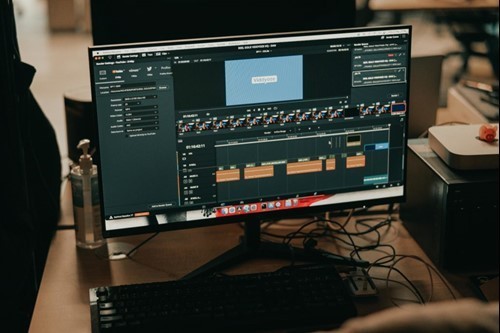Truth be told, if the material you’re working with in post-production isn’t up to scratch, well, there’s no magic wand in the world that’ll save it. Your video is always going to fall short. So, without exception, during the pre-production and production phase, make sure your video content is absolutely on point.
And if you’re new, that means really getting to know your camera, making sure you know how to tell a good story, understanding the basics of lighting, and ensuring your audio is on point. Then you can make the most of the opportunities that come with post-production.
1. Try Transitions – But Also Don’t
Clever and well-timed transitions often go unnoticed. This is good. It means you’ve smashed them. But never overdo them. While there is always a time and a place for transitions, less is more.
What I recommend is that you master your cut and scene transitions – and leave the crossfades and wipes for movie directors. When used badly, they can often look tacky and look out of place. Unless, of course, you’re shooting an 80s flick. The go for it.
2. Create Mega Montages
If you have a lot you want to cover, but don’t want to add more time to your video, simply smash out a brilliant montage – always backed by a “banging beat” (see point four for more). Obviously this only really works for visually intensive content. A montage wouldn’t, for example, work for an interview piece.
Having some of your very best clips – which, FYI, can include audio snippets – is a very clever way of quickly showcasing the point you’re trying to get across while keeping things fast-paced and interesting. Remember to mix up the shot types. Your montage should include sides, medium shots and closeups.
3. Keep B-Rolling, Rolling, Rolling
You need to keep your viewers engaged throughout your video – otherwise they’ll get bored, switch off and go elsewhere. B-roll is one way of doing that. As a rule of thumb here at Viddyoze we tend to slot in a bit of b-roll every 30 seconds or so.
These can be cutaways, ‘slomo’ footage, screen captures, images and slides or – even better yet – video animations ( which we can help you make). Ultimately, what you’re doing is creating a sort of mini-brain refresh in your viewers. This keeps them engaged because it introduces something that is visually new or different. It’s simple, but super powerful.
4. Bang Out The Banging Beats
Okay, no one says that (I hope), but you do need to make sure you’re adding a great soundtrack to your videos. As the age-old saying goes (cough, cough), visuals are one-half of a video. The other half is audio.
Learn to use music to your advantage. Got an emotional scene that’s a bit static? Some string music could really get your viewers’ heartstrings going. An action scene that’s lacking, well, any real action? Stick in some fast-paced rock or trap beats in and you’ve got yourself an instant adrenaline rush kind of a vibe.
It’s not all music though, SFX and well-recorded audio will make or break your video content.
5. Give Your Footage An A-Star Grade
This one is very important to me because I love using color to shape my visuals in post-production. Moreover, this technique is vitally important for making your videos really stand out from the crowd.
I will more than likely already have an idea of what kind of colors I want to use in post-production, which also shapes how I shoot in the first place. If you’re serious about video, grading is an important skill to learn. It’s not easy though, but there’s a lot of help out there on YouTube. We recently made a video about using LUTs for a quick way to add style to your videos and It’s a great place to start.























